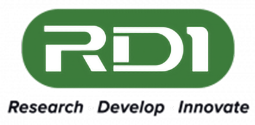
RDI Inc.
Established in 1988, RDI Inc. is a global player engaged in numerous projects across the world, specializing in engineering services, electronic components, and comprehensive system manufacturing. With a commitment to meeting and surpassing customer expectations in terms of budget, specifications, and timelines, RDI delivers top-notch products. The company is expanding its range of electromechanical devices, encompassing audio devices, speakers, miniature switches, and tailor-made cable assemblies.
USB Cables
Results:
2
Series
Configuration
Specifications
Length
Transfer Rate
Features
Wire Gauge
Color
Shielding
Results remaining:2
Applied Filters:
RDI Inc.
About USB Cables
USB cables are widely utilized for transmitting data between devices or for powering and charging electronic devices. These cables feature USB interconnects on one or both ends, enabling seamless connectivity with various devices, particularly computers and external peripherals.
USB cables come in different configurations, lengths, specifications, wire gauges, shielding options, and styles, ensuring compatibility and optimal performance in diverse scenarios.
The configuration of USB cables refers to the arrangement of connectors at each end. Common configurations include female to female, female to male, male to male, female to cable, and male to cable. Each configuration serves specific purposes depending on the desired connection setup.
USB cables utilize different types of USB connectors, such as USB-A female/male, USB-B female/male, micro B female/male, micro A female/male, C female/male, mini A female/male, mini B female/male, and power male plug. These connectors have distinctive shapes and sizes, allowing them to interface with corresponding ports on devices.
The length of USB cables can vary to accommodate different spatial requirements and connectivity distances. They are available in various lengths, ranging from short cables suitable for close-range connections to longer cables that provide flexibility and convenience when devices are physically distant.
Specifications of USB cables may include data transfer rates (such as USB 2.0, USB 3.0, or USB 3.1), power delivery capabilities, and compatibility with specific USB standards.
Wire gauge refers to the thickness of the wires inside the cable. Different wire gauges offer varying levels of electrical conductivity and durability.
Shielding is an important feature in USB cables, as it helps reduce electromagnetic interference (EMI) and ensures reliable data transmission.
Lastly, USB cables exhibit different styles and designs, allowing users to select the most suitable option based on their preferences and needs.
In summary, USB cables are versatile tools that enable data transmission, power delivery, and charging for electronic devices. With various configurations, lengths, specifications, wire gauges, shielding options, and connector styles, these cables provide flexibility and compatibility across a wide range of applications.


